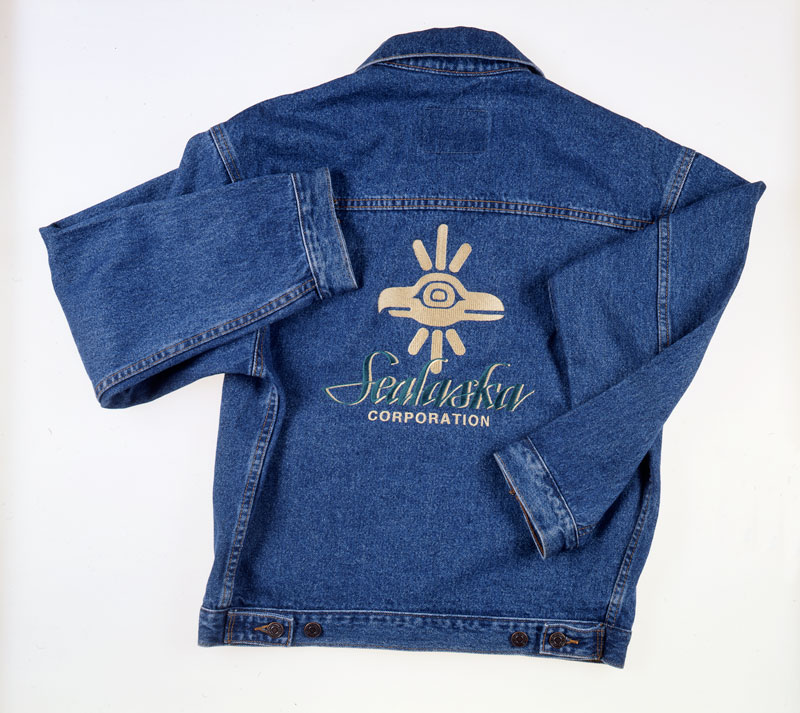Alaska's natural resources have drawn many nations to its shores. Russian, Spanish, French, British, and American explorers and fur traders all arrived in their sailing ships in the last quarter of the 1700s. At first Russia dominated the market, establishing fur-trading headquarters in southeast Alaska. Tlingit elders still tell the story of their ancestors' first meeting with white men. Except for the introduction of diseases, early trading encounters did not greatly interrupt traditional Tlingit life.
The United States purchase of Alaska in 1867 brought settlers, missionaries, educators, gold prospectors, and fish canneries. This influx of outside philosophies and economic interests severely impacted Tlingit land ownership, language, culture and self-esteem. Whenever I speak Tlingit I can still taste the soap, says one elder, recalling the native-language ban in the schools.
Alaskan Tlingits have a unique status in the United States due to their historic Indian rights movement that began early in the 20th century. As a result of the Alaska Native Claims Settlement Act, Tlingit people do not reside on reservations but are shareholders in their own regional corporation, Sealaska Corporation, and a dozen smaller village corporations that manage tribal lands and natural-resource enterprises.

Haida peoples, British Colombia, Canada, ca. 1900
Argillite; L 28.0 x W 3.5 x H 7.5 cm; 23102-431, gift of John A. Beck
Euro-American fur traders introduced commercial tobacco and the custom of smoking to the northern Northwest Coast Natives. The Tlingit and Haida peoples were already cultivating native tobacco, which they mixed with lime and ash before sucking it like snuff.
Around 1821, in response to maritime trade opportunities, Haida carvers began making pipes in argillite. This soft, black stone occurs in only one vein on the Queen Charlotte Islands. The enterprising carvers produced these pipes solely to sell to sailors and shipboard passengers. Figures of Euro-American seamen intertwine with Northwest Coast sea and land creatures in these mazelike depictions.

Tlingit and Haida peoples, Juneau, Alaska, ca. 1996
Cotton denim, copper, steel, nylon, synthetic leather, commercial dyes, ink; L 64.8 x W 150.0 cm; 36211-1, gift of Sealaska Corporation
In 1912, a group of educated Tlingit and Tsimshian men founded the Alaskan Native Brotherhood (ANB) to fight for civil rights. For decades ANB leaders fought against rampant racial discrimination, finally convincing the Alaska legislature to pass the first anti-discrimination law in the nation in 1946. That was 20 years before the national Civil Rights movement.
The brotherhood fought for the return of millions of acres of land that the federal government had appropriated for the Tongass National Forest. The organization's early efforts culminated in the Native Claims Settlement Act of 1971.
Congress mandated the creation of the Sealaska Regional Corporations in Southeast Alaska, conveyed lands to these corporations, and paid compensation for the remaining land claims. Today Sealaska Corporation manages thriving natural resources enterprises for its Tlingit, Haida, and Tsimshian shareholders.
The logo of the Sealaska Corporation on the back of this jacket displays the joined heads of a raven and an eagle, representing the two moities of the Tlingit and Haida nations.
Alaska Native Corporations
The U.S. government created the Alaska Native corporations in 1971, as part of the Alaska Native Claims Settlement Act (ANCSA).
In all, the ANCSA established some 200 village corporations and 13 regional corporations (12 in Alaska and one in the state of Washington to represent Alaskan Natives in the Lower 48). The act gave the state's native peoples $967 million in cash and 44 million acres of Aleut, Indian, and Eskimo homelands in exchange for their promise to give up any other land claims.
The Alaskan Native corporations are cooperatively structured. They are member-owned groups (each Alaskan Native was given 100 shares of stock in her/his corporation) with democratically controlled boards that are organized on a one-member, one-vote basis.
Today these Native corporations are involved in almost every kind of business conceivable in Alaska. They mine for gold and other minerals, harvest timber and process wood products, operate fisheries and process seafood, manage hotels and other commercial activities, own port facilities, sell reindeer antlers (which grow back every year), provide a host of services to the oil industry, develop real estate, offer tourism programs, and run everything from grocery stores to shipping firms to construction companies.
